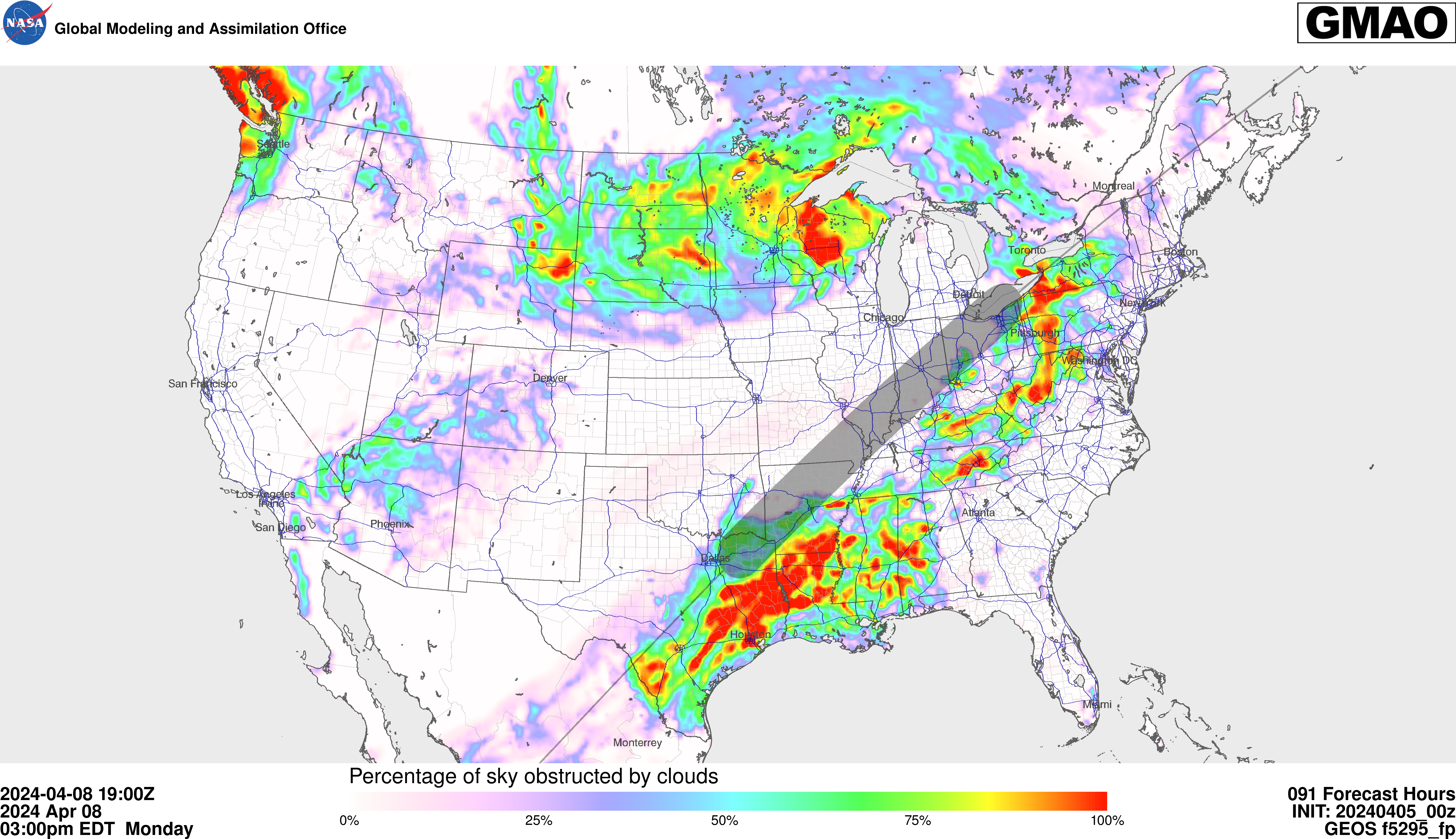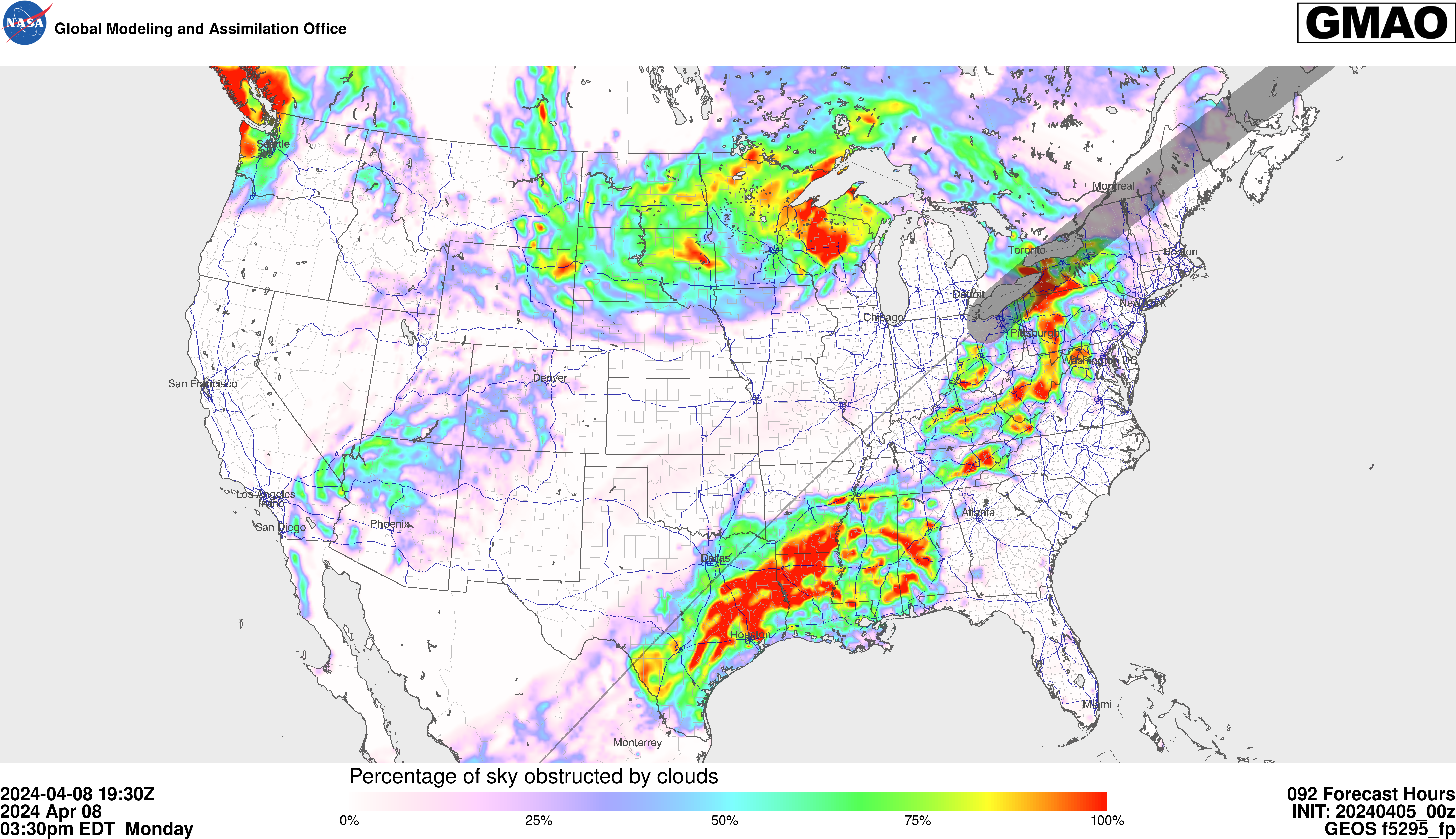April 2024 Solar Eclipse – 3-Day Cloud Cover Forecast
The visibility outlook for the April 8, 2024 Total Solar Eclipse across the central and eastern US looks to be almost an inverse of the climatology for cloud coverage along the path of totality. The previous Snapshot on this event highlighted the average cloud coverage from the years 2000-2023, with the general pattern being that the further north along the path, the more cloudy skies would be expected to be. However, the GMAO’s flagship NWP model, GEOS-FP (Goddard Earth Observing System – Forward Processing) predicts the southern parts of the path, particular Texas, to encounter the highest cloud cover density, while the far-northern parts of the path (Maine, Vermont, and New Hampshire) to have the clearest skies and best viewing conditions.



The main cause of the cloud cover over most of Texas is a southerly branch of the jet stream bringing up moist, humid air from further south. This will bring not only the densest cloud cover along the path, but the highest chances for precipitation as well. Luckily for those further north, starting in Oklahoma and moving into Indiana, it looks like mostly clear to partly cloudy skies. This region does have a chance for clouds to develop, but it appears as though the timing of their development will be later in the afternoon and into the evening, after the eclipse has occurred. This region should keep checking the forecast over the weekend. Things revert back to a cloudy forecast moving further along the path, as a low pressure system situated in the upper-Midwest will create obscured viewing conditions for those along the eastern Great Lakes region (Cleveland, Buffalo, Erie). This area is one to keep an eye on, though, as the forecast may improve as it gets closer to the eclipse. Entering upstate New York and continuing on through Maine, the conditions seem optimal; for being 3 days away, the Adirondacks and northern New England appear to have the best view for the eclipse lined up. Whatever clouds may form here - if any do at all - should be higher in altitude than the previously mentioned regions forecasted to see cloudy skies, which are less obstructing than low-level clouds.
It should be noted that these figures and forecasts are for large areas, and wherever someone may be viewing the eclipse, there is still a possibility for conditions to be different at the exact time it occurs. Even if is is cloudy for the entire day leading up to it, a short break in the clouds is all that is needed for the approximately 4 minute event to be observed in all its glory. Be sure to view the event safely, using only approved eye protection, and check updates to forecasts regularly over the weekend. Enjoy this incredible experience!


